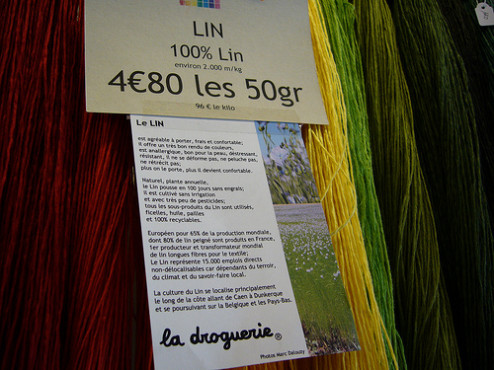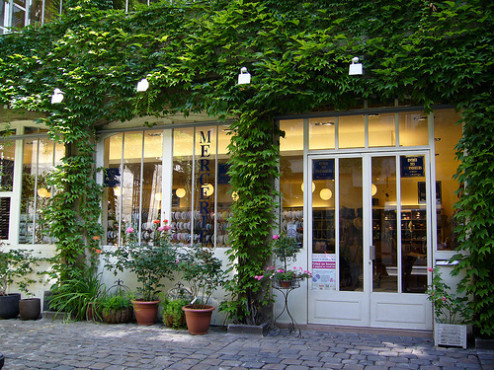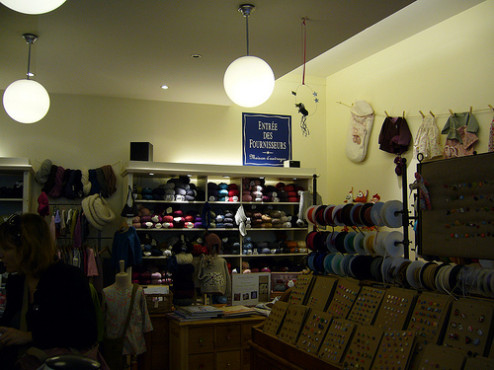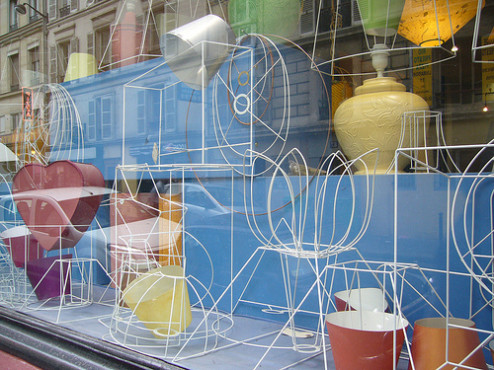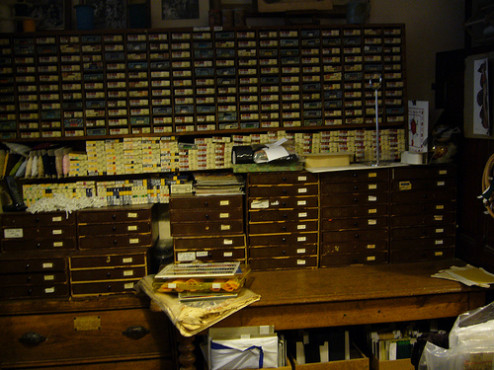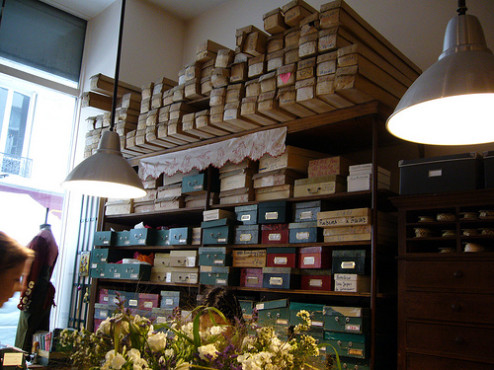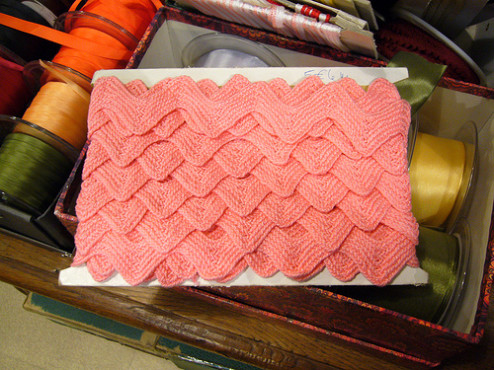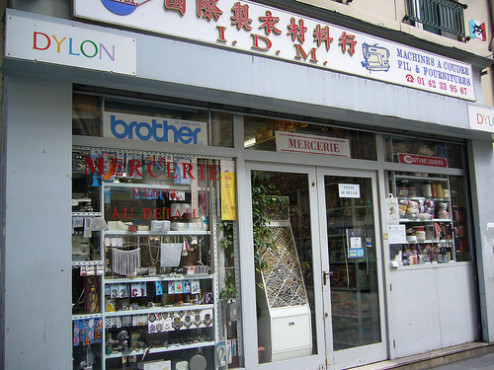
This is my knitting kit: the essential paraphernalia I use on a daily basis. When I am not carrying it with me on my knitting travels, it lives under the couch in our flat. In conjunction with my hands and brain, these are the tools I couldn’t work without. Project specific needles and yarn get called up when needed, as does my ball winder and swift. They have a less cushy life: they live in the Siberia that is my studio.
Plenty of my kit is bog standard and has been with me for years. It’s what I’ve got and I’m happy to make do. There are a few things in there that I am sentimental about, but most of it is purely functional and easy to replace. The selection has been honed down through trial and error; I like it cause it works the way I want it to and maybe I don’t know better. My fantasy is, as I lose bits or give them away, I’ll upgrade them, item by item with lovely artisanal versions. The reality is, I probably already have a back up version found while rummaging through a knitting needle bin in a charity shop or one that was kindly bequeathed by a non-knitters’ grandma.
Recently a horror befell Karen of Fringe Association: she lost her whole pouch while she was travelling. This is the woman who has a regular feature on her blog called Our Tools Ourselves (which I contributed to last year). On instagram and beyond knitters’ have been showing their gear in solidarity with Karen’s loss. They have inspired me to record in detail what is in my kit. I realise I want to share more details than just a picture. Each item has a history and reason for being in there which may be both entertaining and useful to know if you’re building out your kit, couldn’t tell what it was from the tiny instagram picture or are just plain curious.
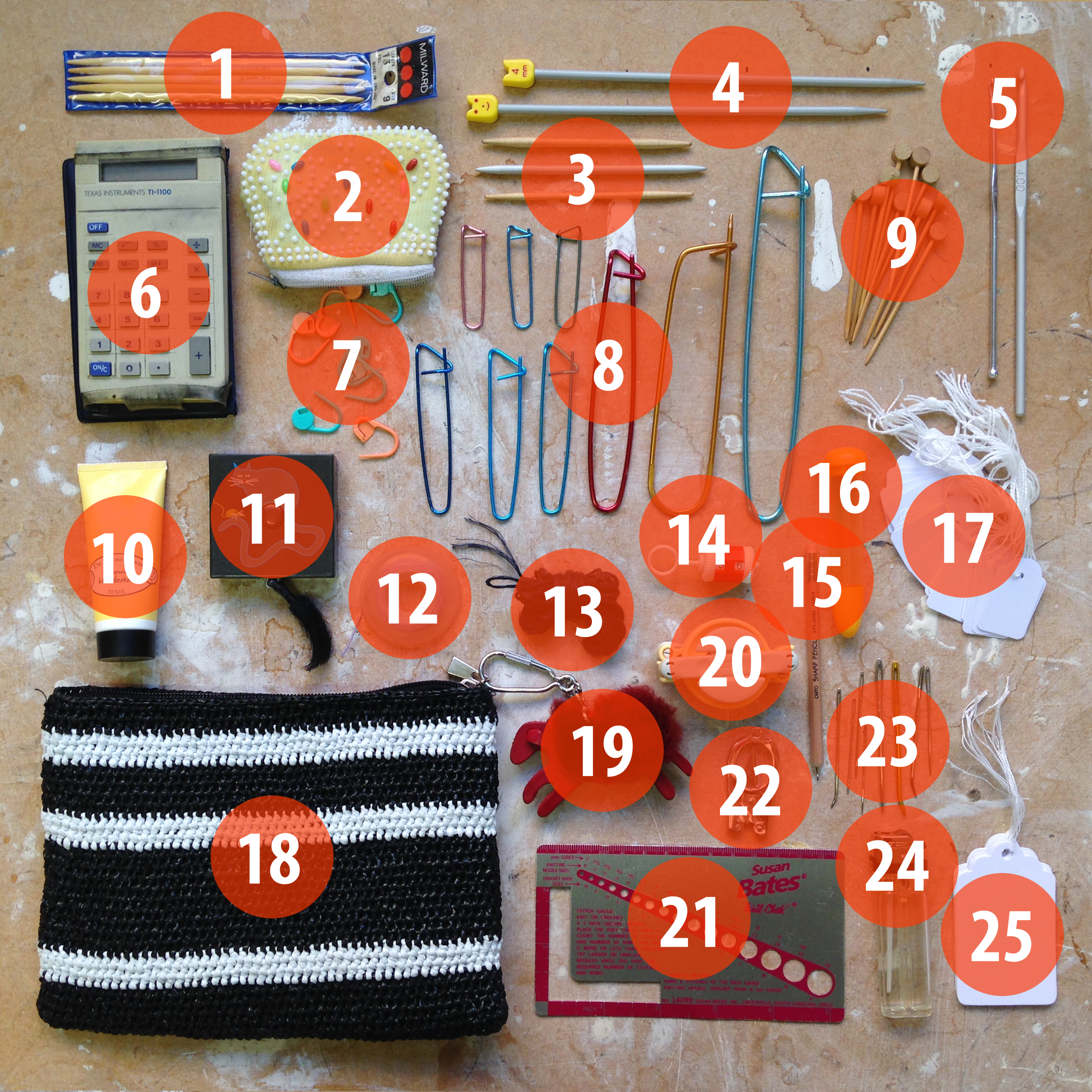 #1 DPNS – that’s Double Pointed Needles to the unitiated. In addition to their obvious use for knitting cuffs, socks, mittens, fingers, top of hats, willy warmers, i-cord, small creatures and circular swatches to be steeked, I find it useful to have a pair of DPNs around for when I need to reknit a section within my knitting. That is, if I have gone wrong or just want to change something more than 3 rows back. I keep a set of 3.75mm/5US/9UK with me, as that seems somewhere in the middle of the needle sizes I usually use. They are short, 13cm bamboo ones I got from Tall Yarns some years back. I keep them in a corresponding size, vintage Milward plastic pouch from when needles were still made in England. The needles weren’t in there when I found the case in one of the aforementioned tubs of stray needles at a charity shop.
#1 DPNS – that’s Double Pointed Needles to the unitiated. In addition to their obvious use for knitting cuffs, socks, mittens, fingers, top of hats, willy warmers, i-cord, small creatures and circular swatches to be steeked, I find it useful to have a pair of DPNs around for when I need to reknit a section within my knitting. That is, if I have gone wrong or just want to change something more than 3 rows back. I keep a set of 3.75mm/5US/9UK with me, as that seems somewhere in the middle of the needle sizes I usually use. They are short, 13cm bamboo ones I got from Tall Yarns some years back. I keep them in a corresponding size, vintage Milward plastic pouch from when needles were still made in England. The needles weren’t in there when I found the case in one of the aforementioned tubs of stray needles at a charity shop.
#2 Kiddy Purse – practical and cute. Just like the sort I had when I was little that possibly came from one of those vending machines that are like a giant gumball machine that dispenses plastic eggs filled with a surprise. You too?
It’s where I keep my stitch markers (see item #7) and if I really am paring down my kit to be lightweight, my Chibi case (item #16, containing items #23) and folding scissors (item #22). I must resist the urge to pick off the little decorative plastic blobs masquerading as beads, though like with a good scab or sunburn, the temptation is strong. It was a gift from Lori, who recently started blogging at Nothing Too Ordinary. I’m excited she’s keeping track of her epic gig going and sharing her cool musical knowledge, not to mention her eye for collecting cute stuff.
#3 Cable Needles – helpful for twisting stitches just how you want too. These are from Brittany, the company, not the place in France. They make beautiful wooden needles out of birch in California, USA, that only improve with age (and the application of greasy fingers). I like the way they are straight, but tapered at both ends to keep the stitches on. I used to have the full set of three sizes, but one didn’t return home after a night of pub knitting. Sadly it was the middle size: my most used one. I find this shape stable enough to keep the stitches on till I need them and quicker to use than the curved ones. Wood (and bamboo, which I count as wood) really is the way to go for cable needles (and DPNs) as they don’t slip about as much as metal. Plastic works too, but I’ve not found them in a shape I like. These I bought when my friend Paula Frazer, singer and weaver, briefly had a knitting shop in Bernal Heights in San Francisco. The replacement medium metal needle is probably the one thing in my kit I’m not so jazzed about, probably because it reminds me of the nicer one I lost. I hate losing things.
#4 Shorty Knitting Needles – for emergency teaching (when I’m feeling nice). I never know when someone will ask to learn to knit. These fit in my pouch and are easy enough to give away. They are also useful for testing things out and cast-ons or bind-offs that require 3 needles. These are 4mm/6US/8UK. Theoretically knitting goes faster if you use thicker needles and yarn, however I find for teaching that these medium sized needles are actually easier to manipulate. Plus having patience is a necessity when knitting, might as well start straight away. These needles, made by Pony specifically with kids in mind, work perfectly for bigger hands too. I think they are super – short so you don’t have to work out where to put the full length of the needles straight off the bat and they’re stumpy enough to prepare you for the feel of circular needles. And they have little smiley faces. Ideally I’d have the pair they make where each needle is a different colour, but these were from a charity shop. I often use an indelible pen to draw a face on one of the tips – the variation helps newbies grasp the concept as you demonstrate and talk them through it.
#5 Crochet Hooks – for free styling and quick fixes. I carry at least 2 with me, often more. Currently I have a 4mm, that’s G/6 in the US and an old English 8. The other hook is a finer 2.5mm. It says 12 on it, cause it’s an old English one, again from a charity shop bundle. That’s one of those in between sizes that doesn’t exist in the USA, but falls between a B/1 and a C/2. I use them for picking up stitches along edges I am going to knit from, embellishing knitted creatures with crochet extremities, doing a crochet cast-on or bind-off, picking up dropped stitches and very occasionally for straightforward crochet. They also come in useful when mending knitwear.
This is rapidly becoming an epic post as I am not even a quarter of the way through the contents of my bag of tricks. I shall leave you with this for now and flesh out the rest in the next couple of days. Otherwise I shall never ever start blogging.





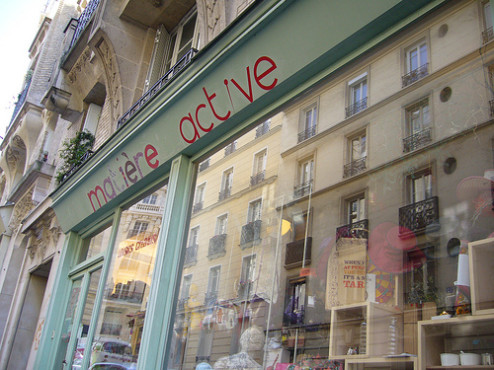
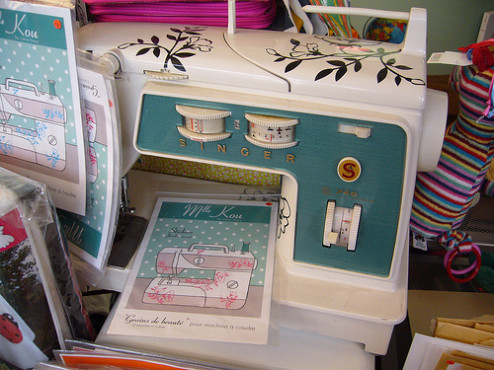
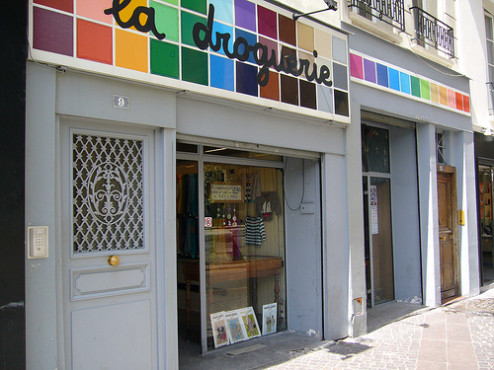 You enter through a rainbow corridor of hanks of yarn. As tempting to run your hands along as a stick along a fence. It would have been impossible to chose a colour if I was in the market for some.
You enter through a rainbow corridor of hanks of yarn. As tempting to run your hands along as a stick along a fence. It would have been impossible to chose a colour if I was in the market for some. Here, it was the linen I was most interested in, as it’s a fibre I’d like to be using more of. It has a pretty good environmental profile, especially if you can get some grown localish and certainly in comparison to cotton.
Here, it was the linen I was most interested in, as it’s a fibre I’d like to be using more of. It has a pretty good environmental profile, especially if you can get some grown localish and certainly in comparison to cotton.